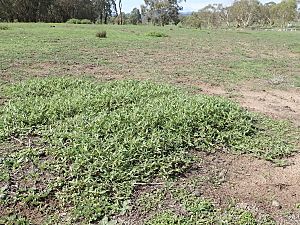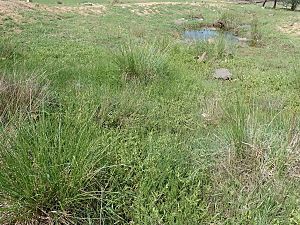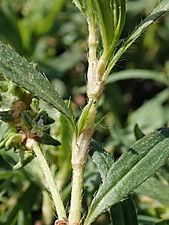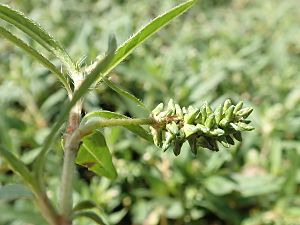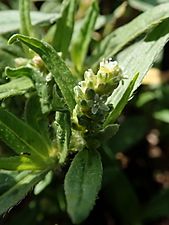Persicaria prostrata facts for kids
Quick facts for kids Persicaria prostrata |
|
|---|---|
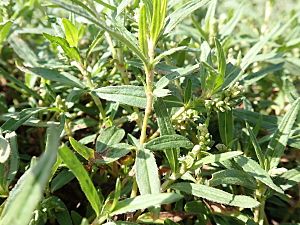 |
|
| Scientific classification | |
| Genus: |
Persicaria
|
| Species: |
prostrata
|
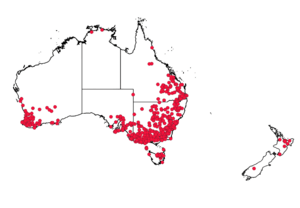 |
|
| Occurrence data from AVH | |
| Synonyms | |
|
|
Persicaria prostrata is a type of flowering plant. It belongs to the plant family called Polygonaceae. This plant is originally from Australia and possibly New Zealand. People often call it creeping knotweed because of how it grows.
Contents
What is Creeping Knotweed?
Creeping knotweed is a plant that grows low to the ground. It is a perennial herb, which means it lives for more than two years. Its stems can grow up to about 40 centimeters (about 16 inches) long.
Leaves and Flowers
The leaves of this plant are shaped like a spear or a narrow oval. They are usually between 1 and 5 centimeters long and 3 to 10 millimeters wide. You might notice small hairs along the edges and on the main veins of the leaves.
Near the base of each leaf, there's a special part called an ochrea. This is a small, papery sheath that wraps around the stem. On Persicaria prostrata, these ochreas are lobed and have tiny hairs about 1 to 2 millimeters long.
The flowers of the creeping knotweed grow in tight, short, cylinder-shaped spikes. These flower spikes can be from 0.6 to 4 centimeters long and 4 to 7 millimeters wide.
Where Does it Grow?
Persicaria prostrata likes wet places. You can often find it growing on the banks of streams, near water tanks, and in ditches. It also likes heavy soils in areas that get flooded sometimes. This plant is well-suited to places where water collects.
How Was it Named?
The plant was first described in 1810 by a botanist named Robert Brown. He gave it the scientific name Polygonum prostratum. Later, in 1974, another scientist named Jiří Soják moved it to a different group of plants, the genus Persicaria. This is why its full scientific name is now Persicaria prostrata.
Gallery


